Abstract
Saccharomyces cerevisiae MATa cells carrying mutations in either sst1 or sst2 are supersensitive to the G1 arrest induced by alpha factor pheromone. When sst1 mutants were mixed with normal SST+ cells, the entire population recovered together from alpha factor arrest, suggesting that SST+ cells helped sst1 mutants to recover. Complementation tests and linkage analysis showed that sst1 and bar1, a mutation which eliminates the ability of MATa cells to act as a "barrier" to the diffusion of alpha factor, were lesions in the same genes. These findings suggest that sst1 mutants, are defective in recovery from alpha factor arrest because they are unable to degrade the pheromone. In contrast, recovery of sst2 mutants was not potentiated by the presence of SST+ cells in mixing experiments. When either normal MATa cells or mutant cells carrying defects in sst1 or sst2 were exposed to alpha factor for 1 h and then washed free of the pheromone, the sst2 cells subsequently remained arrested in the absence of alpha factor for a much longer time than SST+ or sst1 cells. These observations suggest that the defect in sst2 mutants is intrinsic to the cell and is involved in the mechanism of alpha factor action at some step after the initial interaction of the pheromone with the cell. The presence of an sst2 mutation appears to cause a growth debility, since repeated serial subculture of haploid sst2-1 strains led to the accumulation of faster-growing revertants that were pheromone resistant and were mating defective ("sterile").
Full text
PDF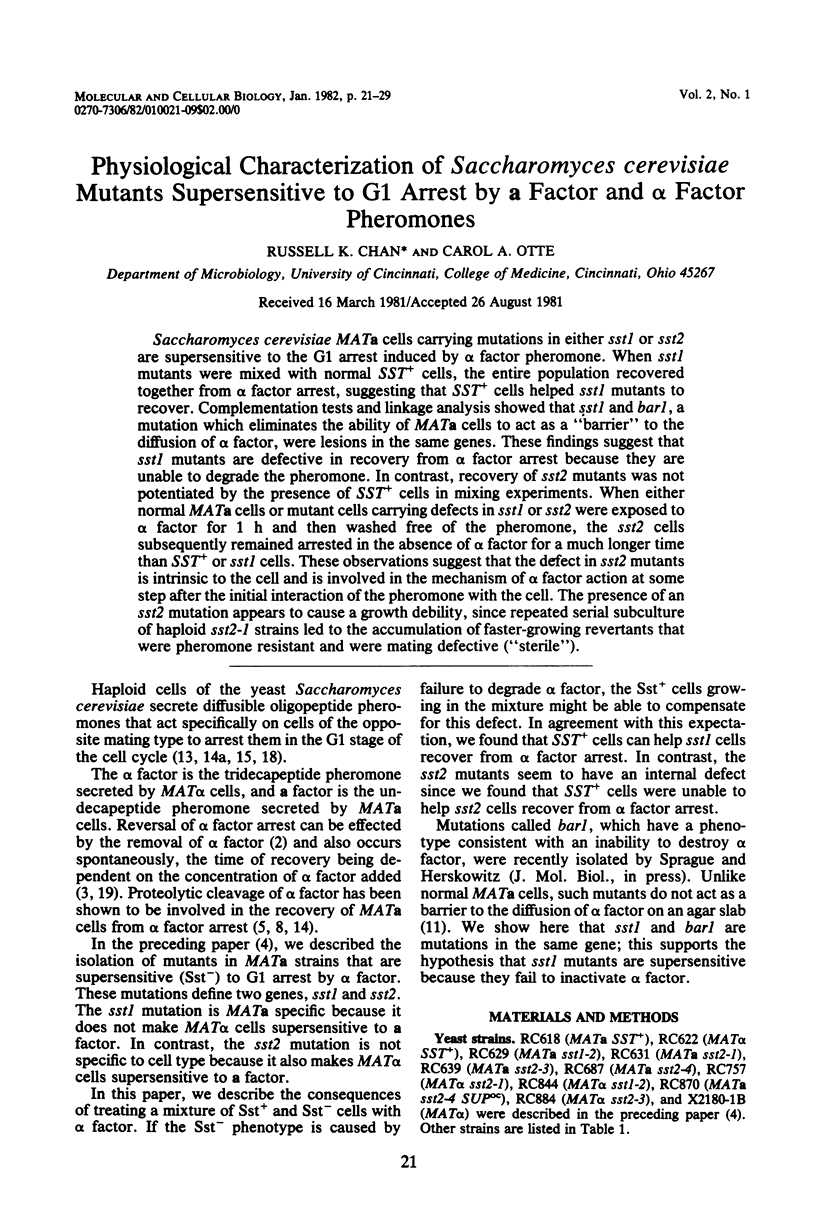
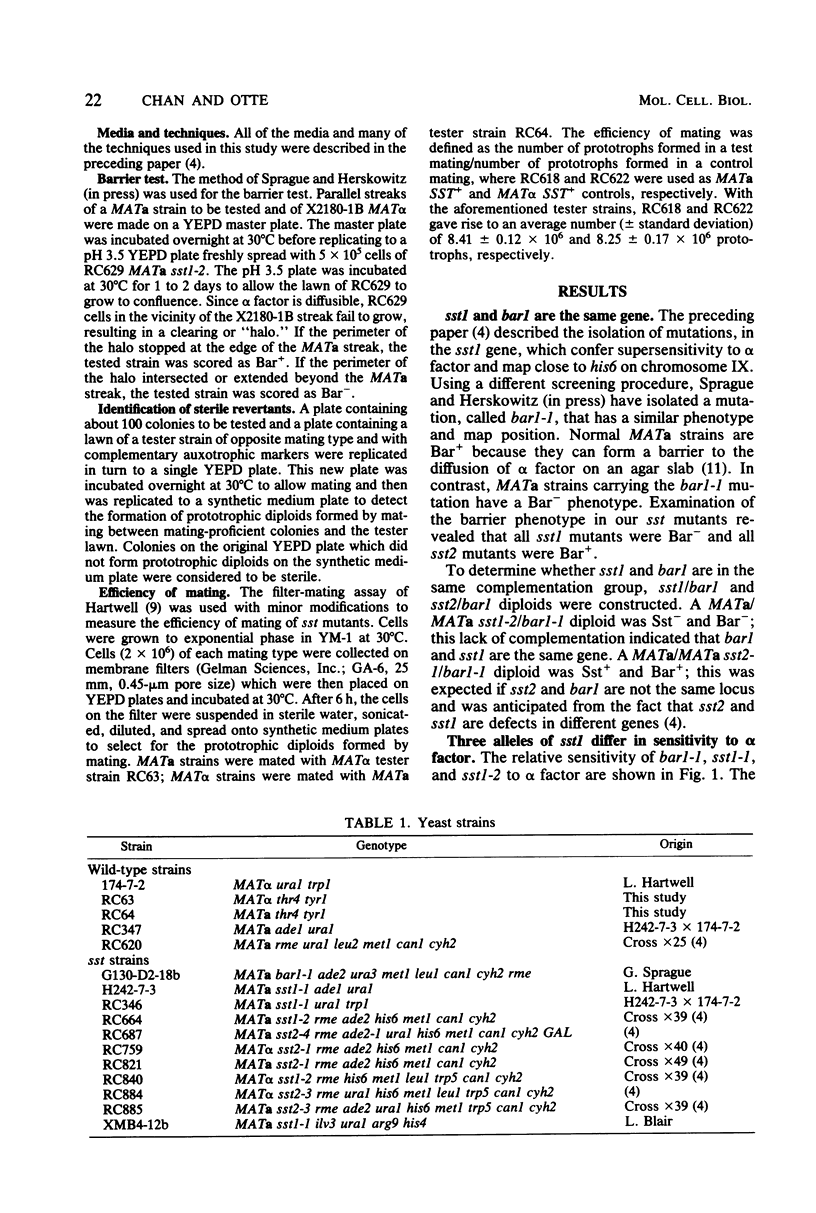
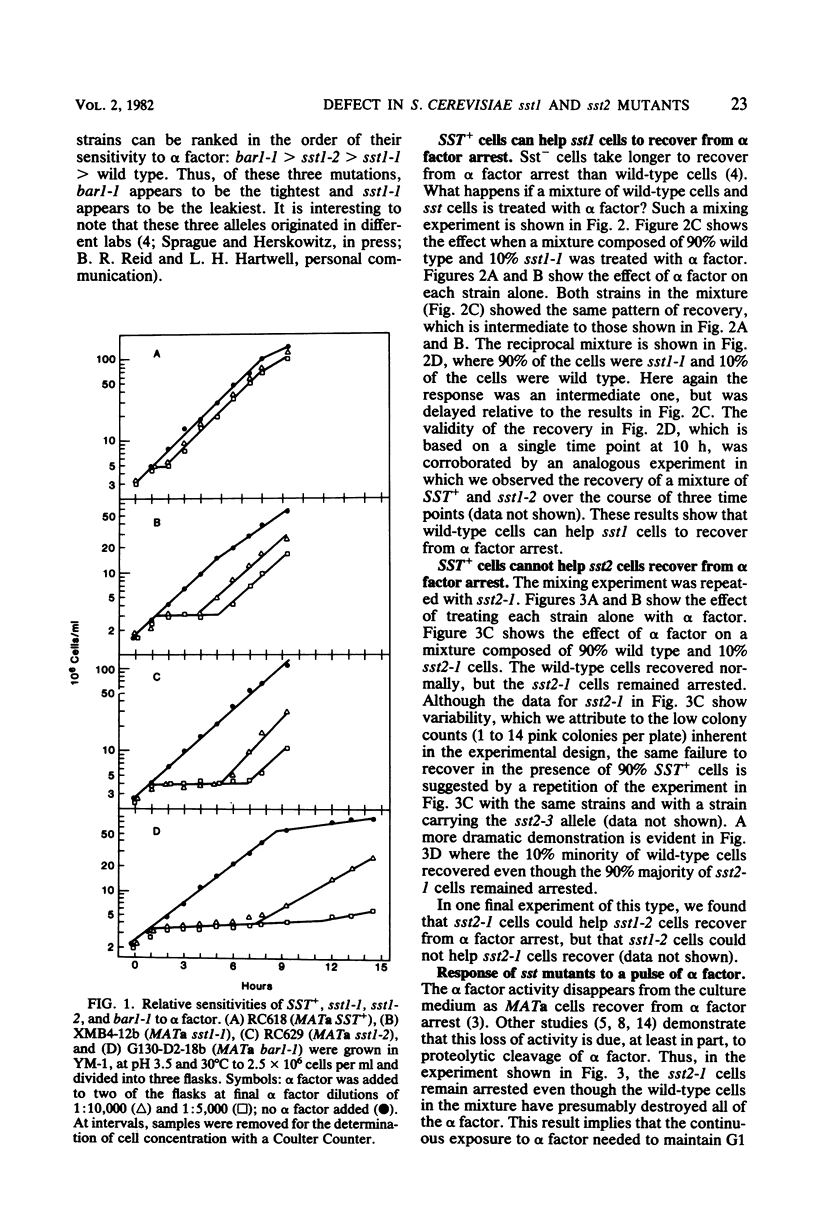
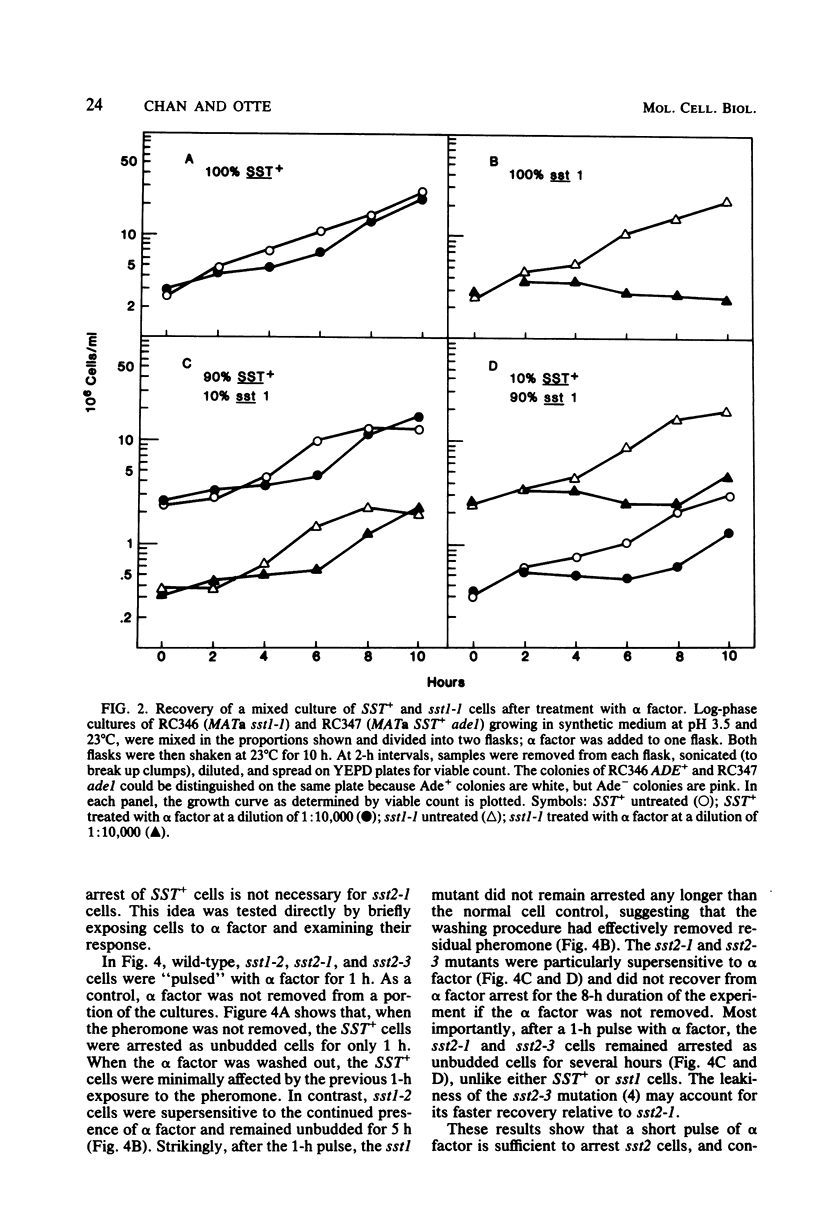
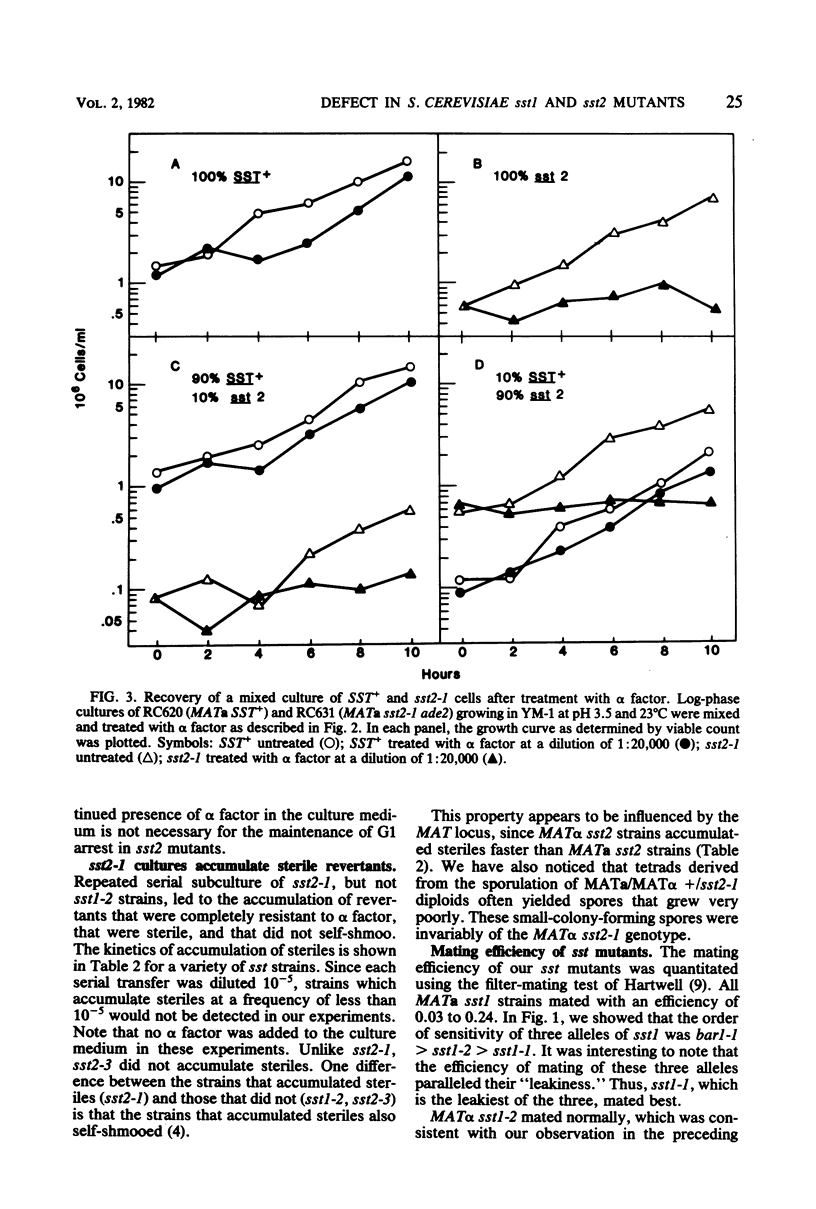
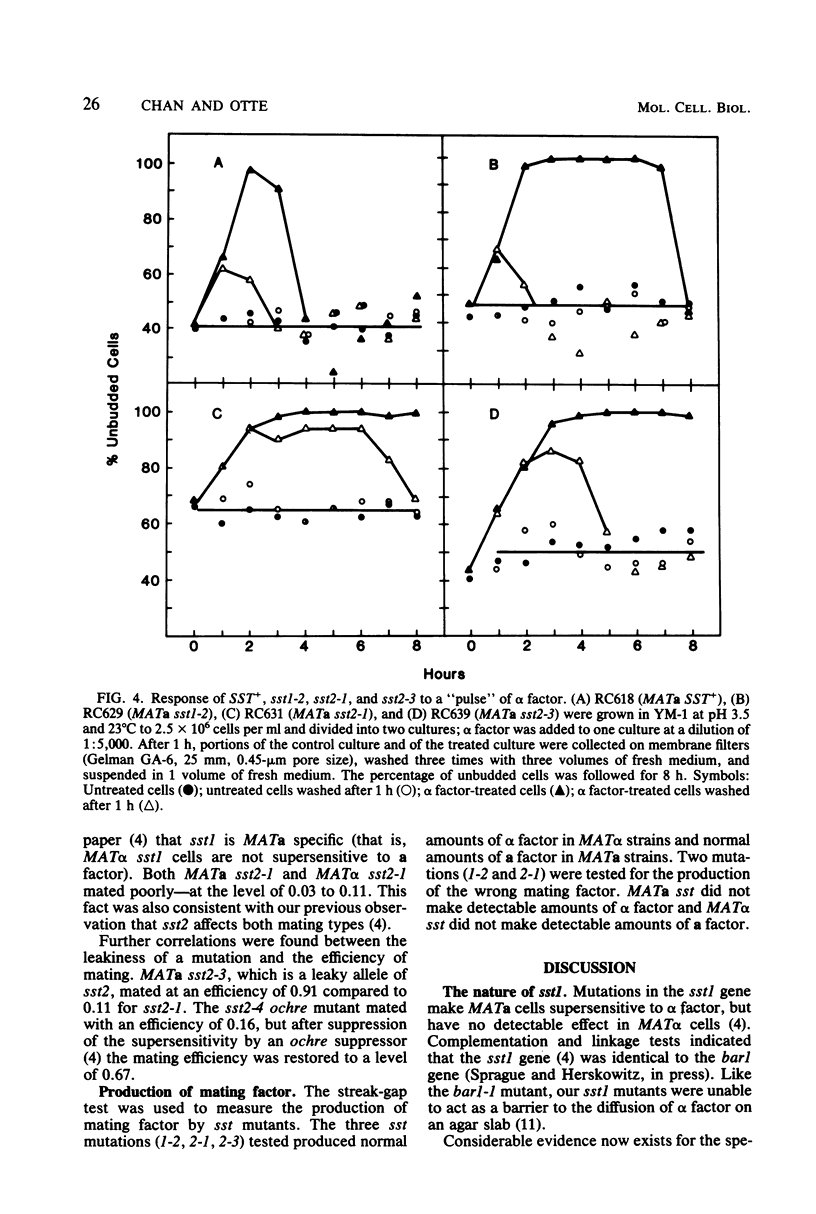
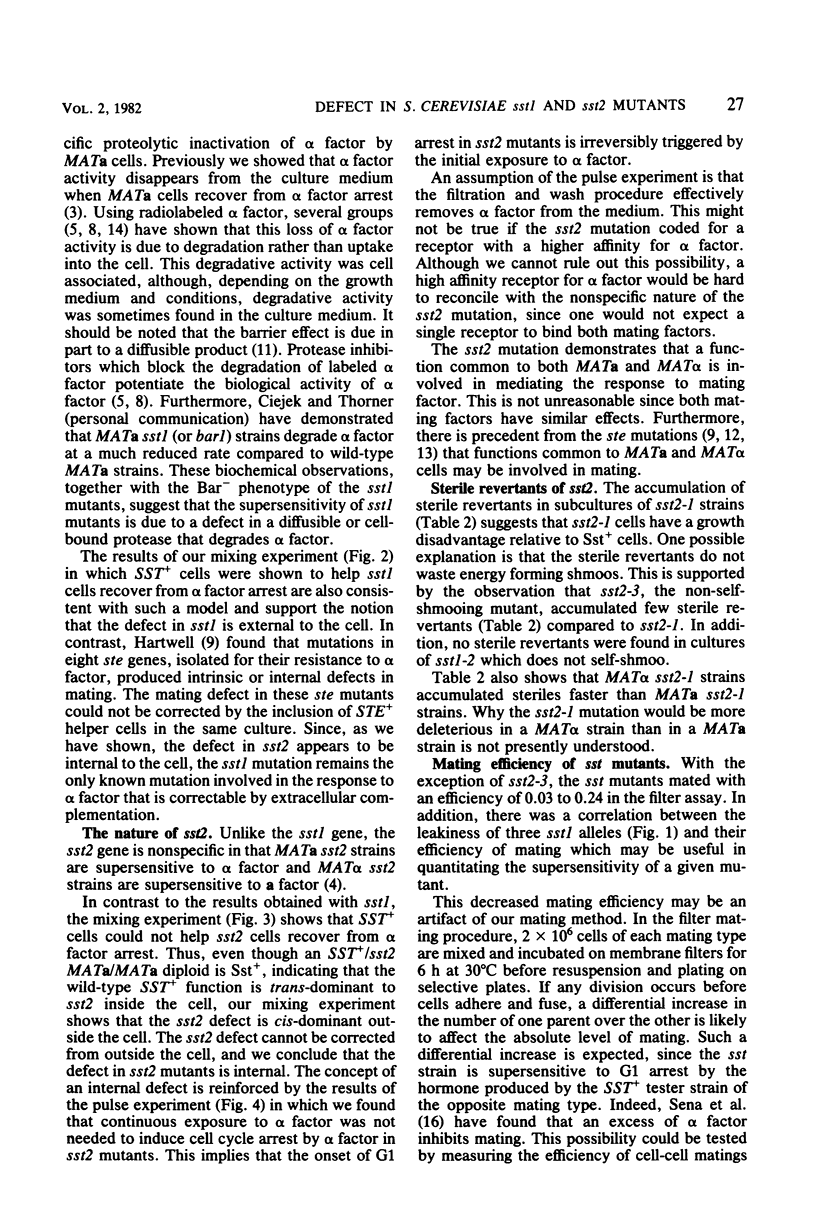
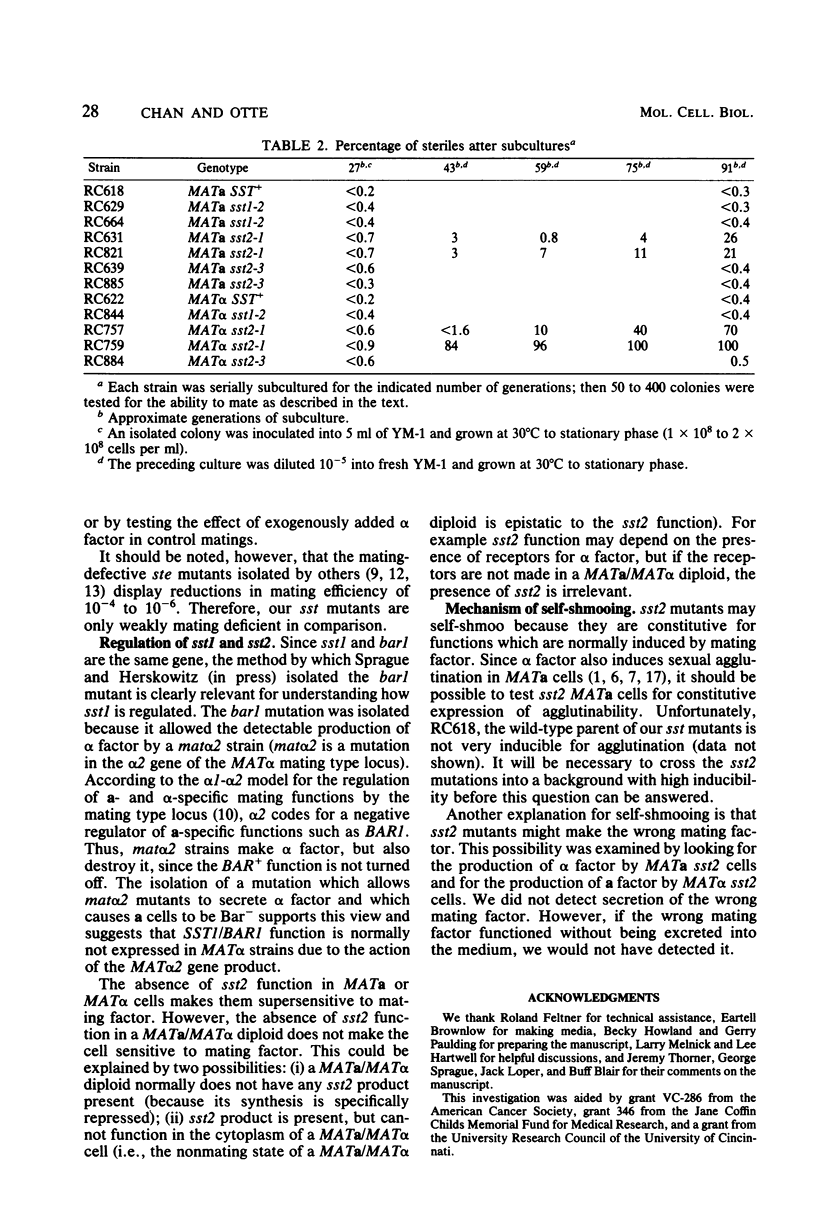
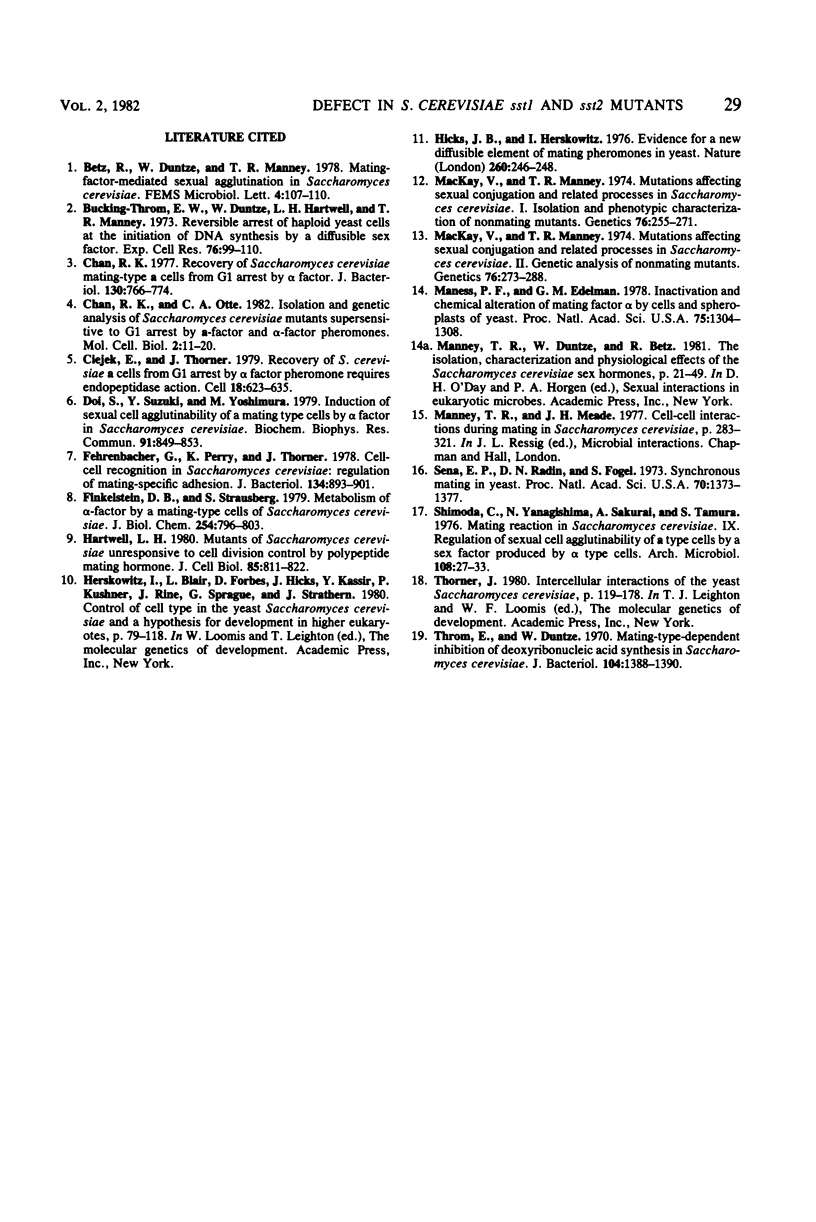
Selected References
These references are in PubMed. This may not be the complete list of references from this article.
- Bücking-Throm E., Duntze W., Hartwell L. H., Manney T. R. Reversible arrest of haploid yeast cells in the initiation of DNA synthesis by a diffusible sex factor. Exp Cell Res. 1973 Jan;76(1):99–110. doi: 10.1016/0014-4827(73)90424-2. [DOI] [PubMed] [Google Scholar]
- Chan R. K., Otte C. A. Isolation and genetic analysis of Saccharomyces cerevisiae mutants supersensitive to G1 arrest by a factor and alpha factor pheromones. Mol Cell Biol. 1982 Jan;2(1):11–20. doi: 10.1128/mcb.2.1.11. [DOI] [PMC free article] [PubMed] [Google Scholar]
- Chan R. K. Recovery of Saccharomyces cerevisiae mating-type a cells from G1 arrest by alpha factor. J Bacteriol. 1977 May;130(2):766–774. doi: 10.1128/jb.130.2.766-774.1977. [DOI] [PMC free article] [PubMed] [Google Scholar]
- Ciejek E., Thorner J. Recovery of S. cerevisiae a cells from G1 arrest by alpha factor pheromone requires endopeptidase action. Cell. 1979 Nov;18(3):623–635. doi: 10.1016/0092-8674(79)90117-x. [DOI] [PubMed] [Google Scholar]
- Doi S., Suzuki Y., Yoshimura M. Induction of sexual cell agglutinability of A mating type cells by alpha-factor in Saccharomyces cerevisiae. Biochem Biophys Res Commun. 1979 Dec 14;91(3):849–853. doi: 10.1016/0006-291x(79)91957-0. [DOI] [PubMed] [Google Scholar]
- Fehrenbacher G., Perry K., Thorner J. Cell-cell recognition in Saccharomyces cerevisiae: regulation of mating-specific adhesion. J Bacteriol. 1978 Jun;134(3):893–901. doi: 10.1128/jb.134.3.893-901.1978. [DOI] [PMC free article] [PubMed] [Google Scholar]
- Hartwell L. H. Mutants of Saccharomyces cerevisiae unresponsive to cell division control by polypeptide mating hormone. J Cell Biol. 1980 Jun;85(3):811–822. doi: 10.1083/jcb.85.3.811. [DOI] [PMC free article] [PubMed] [Google Scholar]
- Hicks J. B., Herskowitz I. Evidence for a new diffusible element of mating pheromones in yeast. Nature. 1976 Mar 18;260(5548):246–248. doi: 10.1038/260246a0. [DOI] [PubMed] [Google Scholar]
- Mackay V., Manney T. R. Mutations affecting sexual conjugation and related processes in Saccharomyces cerevisiae. I. Isolation and phenotypic characterization of nonmating mutants. Genetics. 1974 Feb;76(2):255–271. doi: 10.1093/genetics/76.2.255. [DOI] [PMC free article] [PubMed] [Google Scholar]
- Mackay V., Manney T. R. Mutations affecting sexual conjugation and related processes in Saccharomyces cerevisiae. II. Genetic analysis of nonmating mutants. Genetics. 1974 Feb;76(2):273–288. doi: 10.1093/genetics/76.2.273. [DOI] [PMC free article] [PubMed] [Google Scholar]
- Maness P. F., Edelman G. M. Inactivation and chemical alteration of mating factor alpha by cells and spheroplasts of yeast. Proc Natl Acad Sci U S A. 1978 Mar;75(3):1304–1308. doi: 10.1073/pnas.75.3.1304. [DOI] [PMC free article] [PubMed] [Google Scholar]
- Sena E. P., Radin D. N., Fogel S. Synchronous mating in yeast. Proc Natl Acad Sci U S A. 1973 May;70(5):1373–1377. doi: 10.1073/pnas.70.5.1373. [DOI] [PMC free article] [PubMed] [Google Scholar]
- Shimoda C., Yanagishima N., Sakurai A., Tamura S. Mating reaction in Saccharomyces cerevisiae. IX. Regulation of sexual cell agglutinability of a type cells by a sex factor produced by alpha type cells. Arch Microbiol. 1976 May 3;108(1):27–33. doi: 10.1007/BF00425089. [DOI] [PubMed] [Google Scholar]
- Throm E., Duntze W. Mating-Type-Dependent Inhibition of Deoxyribonucleic Acid Synthesis in Saccharomyces cerevisiae. J Bacteriol. 1970 Dec;104(3):1388–1390. doi: 10.1128/jb.104.3.1388-1390.1970. [DOI] [PMC free article] [PubMed] [Google Scholar]


